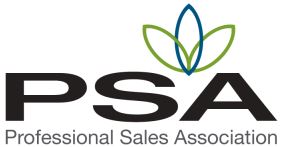In the mid-1930s, Alan H. Monroe developed a pattern for persuasive messages that has become something of a standard because of its effectiveness. It is both logically and psychologically sound. It is known as the motivated sequence. It is explicitly designed to move an audience to action.
Attention: This step is designed to gain the interest of the listeners. One of the biggest problems here is assuming you have the audience’s attention. In fact, assuming the step as a given causes problems throughout the entire speech. You cannot persuade someone unless you have his or her attention. Simply stating the topic, or reading a prepared introduction with poor eye contact will not fulfill this requirement.
This step is very similar to the traditional introduction.
You can capture attention using the various methods discussed in class an in our text including relating to the audience, showing the importance of the topic, making a startling statement, arousing curiosity or suspense, posing a question, telling a dramatic story, or using visual aids.
Need: The need step is used for developing or describing some problem or for demonstrating that the audience has a need for the speech you are giving. You want them to say to themselves, “I need to hear this,” or “Something needs to be done about this!” Again, don’t assume the need is obvious. Remember that this step involves need from the standpoint of the audience member. The door-to-door salesperson who says “I need one more sale so I can go to Hawaii” is being ineffective; s/he should address the prospect’s need.
You want to answer the question in the mind of the audience, “Why should I care?” It is important to state the need clearly and to illustrate it with strong support materials statistics, examples, stories, and testimony – that relate directly to your audience’s values or vital interests. By the end of this step, the audience should be so concerned about the problem that they are psychologically primed to hear your solution.
Satisfaction: Next, present a solution to the problem you presented in the Need step. Show how to satisfy the need. Scratch the itch. The Need step and the Satisfaction step appeal primarily to left-brained, logical thinking (although you always need some appeal to the right-brain thinking as well, especially in terms of clarifying information). In this step, you want the audience to think, “That will work!” Be sure to offer enough details about the plan to give listeners a clear understanding of it. Support materials are also useful here, such as pilot programs that have proven successful or study results demonstrating the potential of your proposed solution to solve the need.
Visualization: This is where we get into true persuasion. The purpose of this step is to develop within your audience an image of the consequences of their choices. If you want them to do something, you have to help them create in their minds an image of the good things that will happen if they do what you want them to do. Or, help them imagine the bad consequences of not adopting the policy.
In this step you are appealing more to right-brain thinking; you want to get them emotionally as well as logically involved, and you want them to feel those consequences on a gut level. In the Satisfaction step, you wanted them to think, “That will work.” In the Visualization step, you want them to think, “That will work for me. I can do that. I can see myself doing that.”
The key to this step is using vivid imagery to show your audience how they will profit from your policy or proposal. Make them see how much better conditions will be once your plan is adopted, or how much worse things will be if no action is taken. You want to answer the question in the mind of the audience, “Why should I become involved?”
Action: The action step should move your audience to actually do something about your speech. To do this, you need to have some clear and specific action for them to take. “Somebody should do something” only frustrates them, because they have no direction. Even “give some money to this cause” lacks motivation. Tell them, “I want each of you to give just $10 to this. If you can do more, fine. But don’t you agree that $10 is within reach of all of us?” Or whatever it is you want them to do. You should know from the beginning of your speech what exact action you are going to ask them to take.
You need to make it as easy as possible for the audience to take the action you want them to take. You need to provide them with phone numbers, addresses, internet addresses, or even maps to the location of an event. The more the audience has to work to implement your solution, the greater probability that few will actually do anything.
Conclusion: You should conclude the action step with a final stirring appeal that reinforces their commitment to act.
Monroe’s Motivated Sequence Outline Format
I. Attention
A. Relevance to audience
B. Qualification to speak
C. Preview of main points
II. Need: A statement of the problems that led you to propose your policy. This is the problem that the charity tries to solve. The qualitative and quantitative significance should be developed with evidence, such as stories, examples and statistics.
A. Qualitative development of need – how does the problem effect real people or animals? Strong value appeals are needed here. This answers the question, “why the heck should I care?”
B. Quantitative development of need – how many people or animals are affected? Show the size of the need.
III. Satisfaction: A discussion of the ways your proposed policy will overcome the problems identified under the NEED step. This would be evidence that your charity is helping to solve the problem – such as empirical examples (stories of REAL People) and expert testimony
IV. Visualization: In which you show the audience the things that will happen if your policy is or is not adopted. This helps the audience see themselves becoming involved helps them personalize the situation.
A. Negative Visualization describes for the audience all the bad things that will continue to happen if your policy is not adopted – i.e. if your charity does not get volunteers and/or donations.
B. Positive Visualization describes for the audience all the good things that will happen if your policy is adopted – i.e if your charity gets volunteers and/or donations.
V. Action: this is where you tell your audience exactly what you want them to do. The easier you make it for the audience to get involved, the more likely they are to act.
A. Statement of desired response
B. Evidence that their involvement will help
C. Summary and closing thought
Source: http://www2.victoriacollege.edu/~cvoss/Monroe.html







